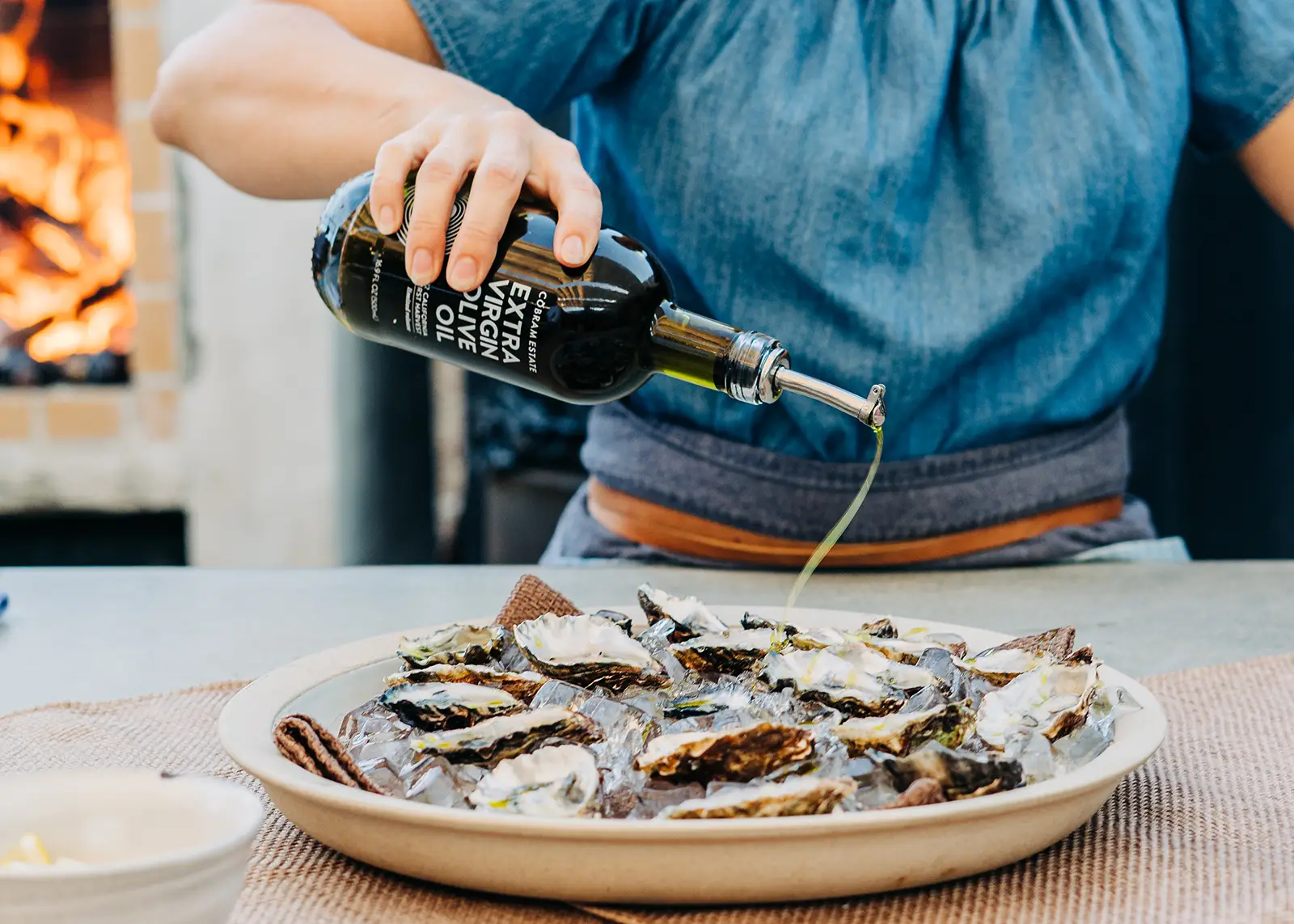
Olive Oil 101
Savvy foodies over 5,000 years ago discovered that the unpalatable fruits of the olive tree contained liquid gold—olives contain 30-70% oil. Olive oil has enjoyed acclaim for millennia, and today is touted for its rich flavor, versatility and nutritional benefits.
Scandals in the international olive oil trade, especially in Italy, have been widely publicized since Tom Mueller investigated them in a New Yorker article in 2007 (which later expanded into the 2012 book, Extra Virginity). Mueller reported that oils labeled as extra virgin Italian oil were cut, spiked, dyed, and worse—better for lighting lamps than adorning plates. Since then, California olive oil has positioned itself as a high quality, fresher, local alternative to the imported oils which were previously assumed by many to be superior. Imported oils took another blow in 2010 when a UC Davis report was published that found 69% of imported “extra virgin” oils sold on supermarket shelves in California did not meet international standards for extra virgin. Of course California has its share of fraud too. As Mike Madison of Yolo Press in Winters supposes in Extra Virginity: “When a product sells for a hundred dollars a gallon or more, the temptation to fraud must be nearly irresistible.”
Fortunately we have lots of fresh, high quality organic oils on the Co-op’s shelves, from such esteemed producers as Yolo Press, Cobram Estate, and Séka Hills. Their oils are created with care from tree to bottle and sold fresh with the harvest date always printed on the label.
Guide To Choosing
Look For Extra Virgin
Extra Virgin is the cold-pressed result of the first pressing of the olives. It is considered the finest and fruitiest of the olive oils and therefore the most expensive. The color can vary from bright green to golden to almost clear. Color does not affect the flavor, nutrient value or acidity.
Some of the best California oils carry the California Olive Oil Council (COOC) Seal, an assurance that the olive oil is extra virgin grade, grown in California, and from the most recent harvest. To earn the seal, the olive oil must pass a wide range of chemical analysis standards and it also must be tasted in a blind sensory evaluation by a trained panel and be determined to be free of defects.
Harvest Year
Look for the harvest date or year on the bottle. Extra virgin oil is best used within 18 months of harvest. However, some bottles are labeled with a 2 or 3-year expiration date, which is why knowing the harvest date is so valuable.
Bottle Color
Light dramatically shortens the shelf life of extra virgin olive oil. Your olive oil should be in a dark or opaque bottle to cut down on light exposure and prevent oil from degrading.
Guide To Using
Storing
Store extra virgin olive oil away from light, air and heat. Although it is convenient to have it next to the stove where you do your cooking, the oil will degrade faster in a warm place. It is best used within 4-6 weeks of opening.
Enjoying
Tom Mueller encourages us to think of olive oil as the fresh-squeezed juice of the olive; as such, it is a product that should be consumed fresh. If you invest in good quality oil, do not save it just for special occasions—use it!
Fresh olive oil can be used in a variety of preparations: in vinaigrettes and dips, drizzled on soups, meats and grilled veggies, tossed with vegetables for roasting and even in baked goods.
Nutritional Benefits
Fresh extra virgin olive oil is the quintessential healthy fat, rich in polyphenols. It is an important part of the heart-healthy Mediterranean diet for its abundance of health benefits. Healthy fats help provide a long, slow-burning source of energy, slow down the absorption of food for proper energy regulation, serve as a protective lining for organs and joints and make food taste good!
They’re also necessary for basic functions of the body like providing the makeup of cell membranes, the formation and function of every hormone and for healthy liver function, among so many other benefits.
Print & Share
